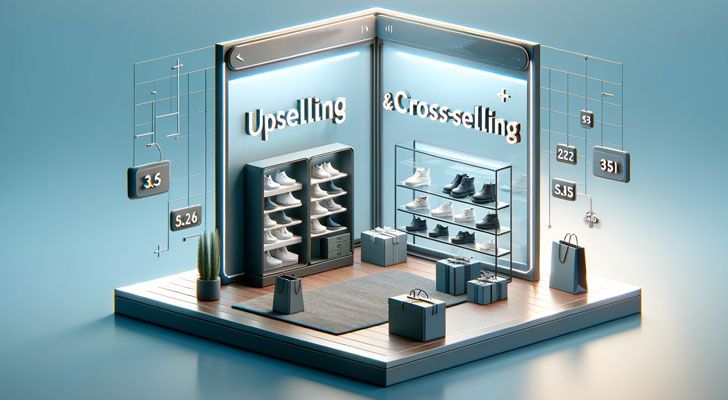For anyone who runs an ecommerce store, increasing revenue is a constant goal. One effective strategy for achieving this is through upselling and cross-selling, where you encourage customers to purchase additional products or complementary items. Automated recommendations play a crucial role in executing these strategies seamlessly. In this blog post, we'll explore the techniques and benefits of using automated recommendations to drive additional revenue through upselling and cross-selling.
Understanding Upselling and Cross-Selling
Upselling involves persuading customers to buy a more expensive or premium version of the product they are considering. It's about enticing them with additional features, better quality, or a more extensive package.
Cross-selling, on the other hand, is about offering customers complementary or related products to what they are currently considering or have already purchased. It's about enhancing their overall shopping experience by suggesting items that go hand in hand with their selection.
We can cross-sell and upsell your store to the moon! Click this link to talk to us.
The Power of Automated Recommendations
Automated recommendations are at the heart of effective upselling and cross-selling. These recommendations are generated based on customer behavior, purchase history, and the analysis of similar customer profiles. They allow you to deliver personalized suggestions at various touchpoints in the customer journey, such as product pages, shopping carts, and confirmation pages.
Here are some of the ways automated recommendations drive additional revenue:
Increased Cart Size: By suggesting relevant additional products, automated recommendations can lead customers to add more items to their cart, increasing the overall purchase value.
Enhanced Customer Experience: Customers appreciate helpful suggestions that align with their interests. This positive experience can lead to repeat business and customer loyalty.
Streamlined Shopping: Automated recommendations make it easier for customers to find complementary items, saving them time and effort in the shopping process.
Optimized Inventory: As you promote products that align with customer preferences, you can optimize inventory by focusing on items that have a higher likelihood of selling.

Techniques for Effective Automated Recommendations
To leverage automated recommendations for upselling and cross-selling effectively, consider implementing the following techniques:
Segmentation: Divide your customers into segments based on their preferences, purchase history, and behavior. Tailor recommendations to each segment to ensure relevance.
Product-Based Recommendations: On product pages, suggest more advanced or premium versions of the item the customer is viewing. Highlight the benefits and features of the upgrade.
Frequently Bought Together: On product pages or in the shopping cart, recommend items that are commonly purchased together with the customer's selection. For example, if a customer is buying a camera, suggest compatible lenses and accessories.
Based on Purchase History: Use a customer's past purchase history to recommend related products. If a customer has bought a laptop, offer accessories like a laptop bag or a wireless mouse.
Dynamic Cart Recommendations: As customers add items to their cart, dynamically adjust the recommendations to ensure they match the contents of the cart. This can lead to immediate cross-sell opportunities.
Personalized Emails: Extend your automated recommendations to email marketing. Send personalized emails with product recommendations based on a customer's behavior and purchase history.
Post-Purchase Recommendations: After a customer makes a purchase, provide recommendations for additional items they may like, which can encourage repeat business.
Limited-Time Offers: Create a sense of urgency by promoting limited-time offers on upsell and cross-sell products. Scarcity can drive conversions.

Measuring Success and Optimization
After implementing automated recommendations for upselling and cross-selling, it's vital to measure the impact of these strategies:
Conversion Rate: Monitor the conversion rates of your recommended products to gauge the effectiveness of your upsell and cross-sell techniques.
Average Order Value (AOV): Track the AOV to ensure that automated recommendations are increasing the overall purchase value.
Customer Feedback: Collect feedback from customers to understand their perspective and make improvements accordingly.
A/B Testing: Continuously experiment with different recommendation techniques and measure which ones generate the best results.
Data Security: Ensure that customer data is handled securely and in compliance with relevant data protection regulations.
Conclusion
Automated recommendations are a powerful tool for driving additional revenue through upselling and cross-selling. By tailoring product suggestions to customer behavior, preferences, and purchase history, businesses can provide a more personalized and convenient shopping experience. The benefits extend beyond immediate sales, as satisfied customers are more likely to become loyal repeat customers. To maximize the impact of your automated recommendations, monitor their performance, and continually refine your strategies based on the data and customer feedback.
Need someone to manage your entire emailing solution? We are waiting to talk to you.





